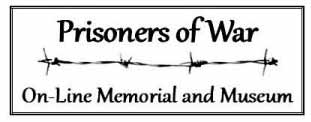Coward, C
Sergeant Major Charles Coward
Charles Coward joined the Army in June 1937. He was captured in May 1940 near Calais while serving with the 8th Reserve Regiment Royal Artillery as Quartermaster Battery Sergeant Major. He managed to make two escape attempts before even reaching a prisoner of war camp, and then made seven further escapes, on one memorable occasion managing to be awarded the Iron Cross while posing as a wounded soldier in a German Army field hospital. When in captivity he was equally troublesome, organising numerous acts of sabotage while out on work details.
Finally, in December 1943, he was transferred to Auschwitz III (Monowitz) labour camp (Arbeitslager) only five miles from the better-known extermination camp of Auschwitz II (Birkenau). Monowitz was under the direction of the industrial company IG Farben, who were building a Buna (synthetic rubber) and liquid fuel plant there. It housed over 10,000 Jewish slave labourers, as well as POWs and forced labourers from all over occupied Europe. Coward and other British POWs were housed in sub-camp E715, administered by Stalag VIIIB.
Thanks to his command of the German language, Coward was appointed Red Cross liaison officer for the 1,200-1,400 British prisoners. In this trusted role he was allowed to move fairly freely throughout the camp and often to surrounding towns. He witnessed the arrival of trainloads of Jews to the extermination camp, followed by their ‘selection’ for either slave labour or the gas chambers. Coward and the other British prisoners smuggled food and other items to the Jewish inmates. He also exchanged coded messages with the British authorities via letters to a fictitious Mr. William Orange, giving military information, notes on the conditions of POWs and prisoners in the camps, as well as dates and numbers of the arrival of trainloads of Jews to the extermination camp.
On one occasion a note was smuggled to him from a Jewish-British ship’s doctor who was being held in Monowitz. Coward was determined to contact him directly and managed to swap clothes with an inmate on a work detail and spent the night in the Jewish camp, seeing at first hand the horrific conditions in which they were held. His experience formed the basis for his subsequent testimonies in post-war legal proceedings.
Determined to do something about it, he used Red Cross supplies, particularly chocolate, to “buy” corpses of dead prisoners, including Belgian and French civilian forced labourers, from the SS guards. Coward then directed healthy Jewish prisoners to join the nightly marches of Jews considered unfit for further work from Monowitz to the Birkenau gas chambers. During the course of the march the healthy men dropped out of procession to hide in ditches; Coward scattered the corpses he had purchased on the road to give the impression that they were members of the column who had died on the march. He then gave the documents and clothes taken from the non-Jewish corpses to the Jewish escapees, who adopted these new identities and were then smuggled out of the camp altogether. Coward carried out this scheme on numerous occasions and is estimated to have saved at least 400 Jewish slave labourers.
In December 1944 Coward was sent back to the main camp of Stalag VIIIB at Lamsdorf (now Łambinowice, Poland) and in January 1945, the POWs were marched under guard to Bavaria, where they were eventually liberated.
After the war Coward testified at the Nuremberg War Crimes Trials, describing the conditions inside the Monowitz camp, the treatment of Allied POWs and Jewish prisoners, and the locations of the gas chambers. In 1953 Coward also appeared as a witness in the “Wollheim Suit”, when former slave labourer Norbert Wollheim sued I.G. Farben for his salary and compensation for damages.
In 1954 John Castle’s book, The Password is Courage, describing Coward’s wartime activities, was published. It has been through ten editions since, and remains in print. (This was adapted into a 1962 film also titled The Password is Courage starring Dirk Bogarde. The film was light-hearted compared to the book and made only passing reference to Coward’s time at Auschwitz; it concentrated instead on his numerous escapes and added a fictitious romantic liaison.)
In 1963 Coward was named among the Righteous among the Nations and had a tree planted in his honour in the Avenue of Righteous Gentiles in Yad Vashem. In 2003 Coward was further commemorated with the mounting of a blue plaque at his home at 133 Chichester Road, Edmonton, London, where he lived from 1945 until his death. The North Middlesex Hospital has a ward named “Charles Coward” in his honour.
In 2010, Coward was posthumously named a British Hero of the Holocaust by the British Government.
Suggest an improvement to this record
